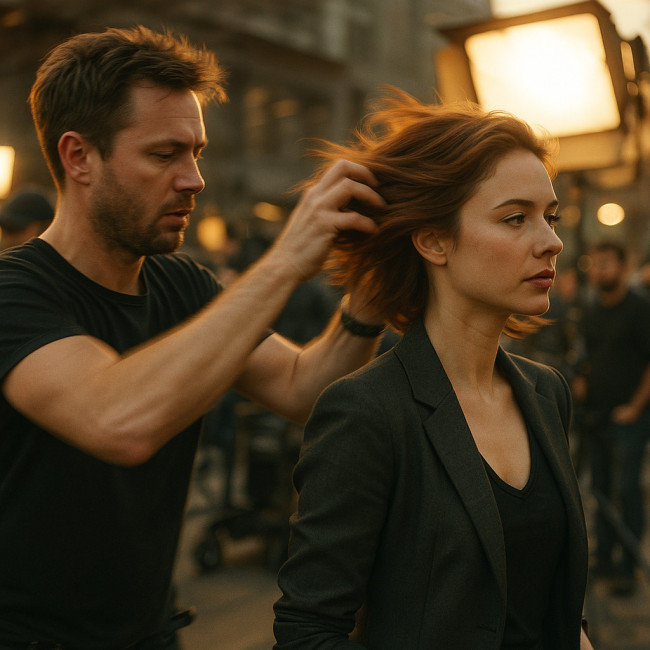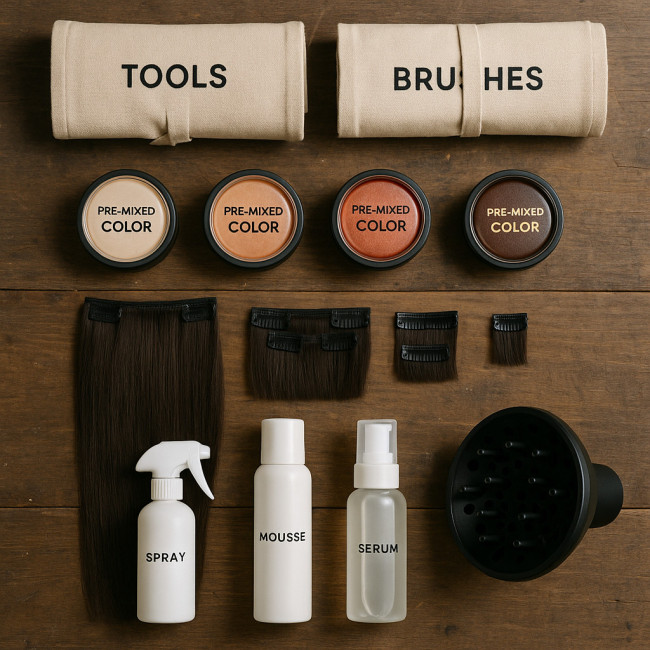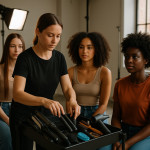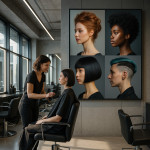Chrono-styling: time-saving coiffeur workflows for back-to-back shoots
Back-to-back filming schedules leave no room for elaborate hair sessions. This guide shares proven, time-saving coiffeur workflows that keep talent camera-ready without overrunning call sheets. From kit prep to digital coordination, you will learn how to shave up to 35 % off styling time while protecting hair health and creative integrity.
Why speed matters on consecutive shooting days

Modern productions stack multiple scenes—or even whole projects—into one tight calendar. A time-saving coiffeur workflow is no longer a luxury; it is a survival kit against late penalties, overtime pay and crew fatigue. Faster hair changes also maximise usable daylight and keep the director's focus on performance rather than logistics.
- Average penalty for a 30-minute delay on set: €1 200 in crew overtime.
- Hair resets rank third among the top five reasons for schedule slippage, just after wardrobe malfunctions and lighting tweaks.
- Stylists who reduce chair time by 20 % report a 17 % increase in repeat bookings for commercial shoots.
Pre-shoot prep: building a grab-and-go kit
Modular tool rolls
Swap bulky vanity cases for slim tool rolls organised by task: prep, style, finish. Each roll holds exactly what one workflow needs—nothing more. Label pouches with coloured tape so assistants can hand you tools in seconds.
Pre-mixed colour pods
For continuity on multi-day shoots, pre-mix toner or gloss in single-use, vacuum-sealed pods. Mark the talent's name, scene and application time. You avoid measurement errors and remove extra bowls from your station.
| Kit Element | Traditional Setup Time | Chrono-styling Setup Time | Time Saved |
|---|---|---|---|
| Tool Layout | 8 min | 3 min | 5 min |
| Product Mixing | 6 min | 2 min | 4 min |
| Station Clean-up | 10 min | 4 min | 6 min |
| Total per shoot day | 24 min | 9 min | 15 min |
On-set chrono-styling workflows
Workflow 1: 15-minute texture reset
Between emotional scenes, curls can collapse or straight hair may frizz. A time-saving coiffeur workflow uses a micro-mist spray loaded with hydrating agents, followed by a diffuser on cool heat and a touch of serum. No shampoo bowl, no new blow-dry—just revival.
- Spritz ends and mid-lengths for five seconds.
- Diffuse for five minutes while talent reviews lines.
- Seal cuticle with serum using your palms, not a brush, to avoid static.
Workflow 2: Clip-in mapping for rapid look changes
Pre-curl and label clip-in wefts (Scene A, Scene B, etc.). Apply a discreet silicon tape marker at the root side; you will re-attach exactly where continuity photos require. Average changeover: 9 minutes instead of 25.
Workflow 3: Dual-task blow-dry & brief
Use a wearable headset to receive real-time script updates while blow-drying. You maintain eye contact with the mirror—keeping talent relaxed—yet adapt to last-second direction. This time-saving coiffeur workflow eliminates separate briefing meetings.
Digital coordination tips
Shared time codes with wardrobe & makeup
Log every hair change into the production's cloud call sheet. The wardrobe lead sees you need seven minutes more; lighting can adjust meanwhile. Result: fewer idle minutes across departments.
Template shot lists to anticipate hair continuity
Create a slider gallery inside your phone's photo app: angle, parting, product list. Each slide carries the slate number for instant reference. When the director asks for “Scene 12 hero look”, your assistant has the formula before you pick up a comb.
For deeper guidance on translating a director's vision, see how to decode a director's hair brief.
Eco-friendly & inclusive considerations
Speed must never compromise ethics. Switch aerosols for pump-action mists and opt for refillable pomade tins. Cutting single-use plastics by 40 % aligns with the sustainable standards outlined in eco-friendly product swaps for coiffeurs.
Camera crews shoot increasingly diverse casts. Keep a fully inclusive texture toolkit so tight schedules never excuse texture-specific neglect.
Real-world time savings: case snapshot
During a three-day fashion campaign, a stylist applied these chrono-styling techniques on six models. Total hair chair time dropped from 5 h 40 min to 3 h 42 min—an overall 34 % gain. The producer redirected the saved 118 minutes to extra wardrobe shots, translating to added deliverables without extending rental fees.
You can observe similar efficiencies across commercial shoots listed on the Artfolio hair-stylist directory, where brands openly rate turnaround speed.
FAQ
- How do I maintain hair health while working faster?
- Use heat tools with infrared technology and keep temperature below 180 °C. Pre-treat with amino-acid mists to cut drying time and prevent cuticle damage.
- What if a director adds an unplanned rain scene?
- Store waterproof sealant spray and anti-humidity sheets in your weather kit. You can lock styles in three minutes without relocating talent.
- Can chrono-styling work for live events?
- Yes. Modular rolls and clip-in mapping translate perfectly to award nights or runway shows where turnaround between segments is under ten minutes.
Quick self-assessment quiz
Conclusion & next steps

Chrono-styling is more than moving faster; it is about creating repeatable, time-saving coiffeur workflows that maintain artistic quality under pressure. Audit your kit, rehearse each workflow and upgrade your online presence with portfolio tweaks that catch production eyes. Ready to slash minutes and win bookings? Start timing your next reset routine today and watch producers notice the difference.











